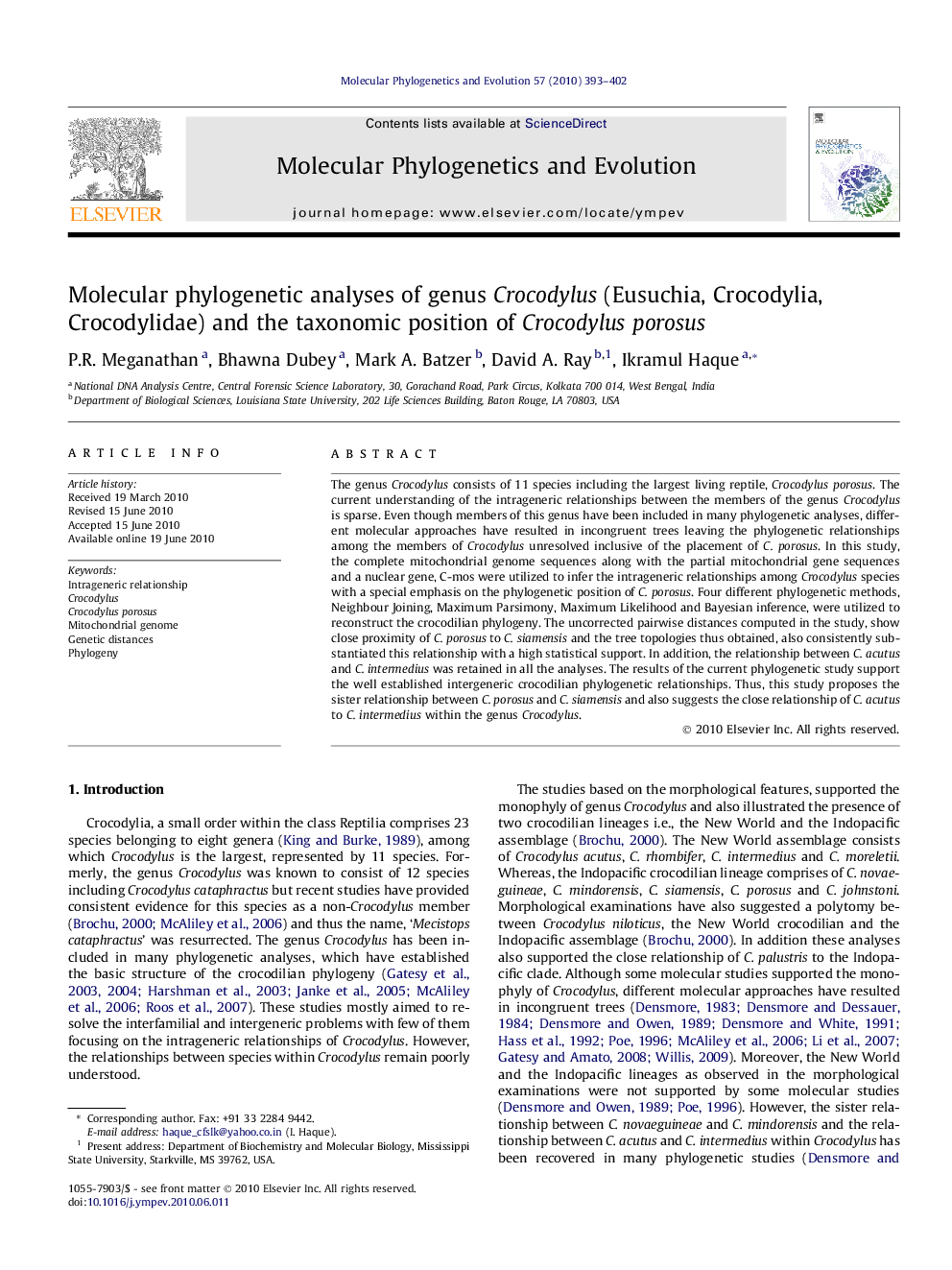| Article ID | Journal | Published Year | Pages | File Type |
|---|---|---|---|---|
| 5920883 | Molecular Phylogenetics and Evolution | 2010 | 10 Pages |
The genus Crocodylus consists of 11 species including the largest living reptile, Crocodylus porosus. The current understanding of the intrageneric relationships between the members of the genus Crocodylus is sparse. Even though members of this genus have been included in many phylogenetic analyses, different molecular approaches have resulted in incongruent trees leaving the phylogenetic relationships among the members of Crocodylus unresolved inclusive of the placement of C. porosus. In this study, the complete mitochondrial genome sequences along with the partial mitochondrial gene sequences and a nuclear gene, C-mos were utilized to infer the intrageneric relationships among Crocodylus species with a special emphasis on the phylogenetic position of C. porosus. Four different phylogenetic methods, Neighbour Joining, Maximum Parsimony, Maximum Likelihood and Bayesian inference, were utilized to reconstruct the crocodilian phylogeny. The uncorrected pairwise distances computed in the study, show close proximity of C. porosus to C. siamensis and the tree topologies thus obtained, also consistently substantiated this relationship with a high statistical support. In addition, the relationship between C. acutus and C. intermedius was retained in all the analyses. The results of the current phylogenetic study support the well established intergeneric crocodilian phylogenetic relationships. Thus, this study proposes the sister relationship between C. porosus and C. siamensis and also suggests the close relationship of C. acutus to C. intermedius within the genus Crocodylus.
